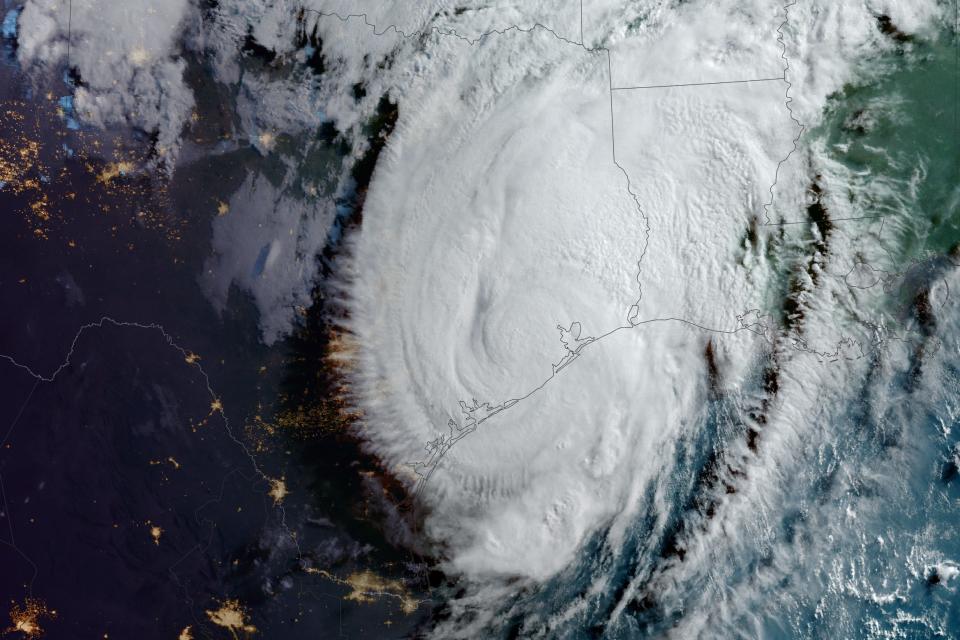Forecasters predict 'hyperactive' hurricane season
Editor's note: In an August 6 update, Colorado State University said its confidence in a "extremely busy" hurricane season had increased, but it was reducing its number of predicted named storms from 25 to 23.
Hurricane Beryl's deadly, record-breaking rampage is all but over, but forecasters say the storm is confirming their fears about a dangerous hurricane season.
On Tuesday, forecasters from Colorado State University raised their already record hurricane forecast. They now expect an additional hurricane (a total of 12 for the season) and two more named storms (25 for the season).
"Hurricane Beryl, a deep tropical Category 5 hurricane, is also a likely harbinger of a hyperactive season," the updated forecast says.
There is a bit of short-term good news, however: "Following Beryl, it does look like the Atlantic season will quiet down temporarily," Phil Klotzbach, a hurricane researcher at Colorado State University, told USA TODAY.
Graphics: As Hurricane Beryl tears through the Caribbean, a look at its record-breaking path
That reprieve is expected to be short-lived: Klotzbach believes the risk could increase by the end of the month.
Once the storm season restarts in a couple of weeks, it may come back with a vengeance, forecasters say.
Hurricane forecasters brace for a dangerous hurricane season
Some experts say Beryl, the earliest Category 5 hurricane on record, confirms their fears about this hurricane season.
That was a "hugely ominous start to the season," said chief science officer Steve Bowen of Gallagher Re, a reinsurance firm, on X, formerly Twitter. "If you were doubtful of the seasonal hyperactive forecasts, this should be a wake-up call."
Forecasters have predicted a busy hurricane season in the Atlantic Basin this year. One forecast predicted as many as 33 named storms; an average year sees 14.
"We are likely going to see more extreme record-breaking storms this season as water temperatures continue to be very anomalously warm AND we transition to La Ni?a, which generally acts to reduce vertical wind shear in the tropical Atlantic and therefore enhance hurricane activity," University of Miami meteorologist Brian McNoldy said on his blog.
Prime Atlantic hurricane season is August, September and October. The most activity comes Aug. 15 to Oct. 15.
When will the next Atlantic hurricane form?
There isn't much going on in the tropics at the moment – and it's not uncommon for July to be "generally quiet" when it comes to tropical storms and hurricanes, according to Weather.com meteorologist Danielle Banks.
In fact, the long-term average for July tropical cyclones in the Atlantic is only 1. That's based on data from the National Oceanic and Atmospheric Administration (NOAA) that goes back to 1851.
And overall, only about 8% of the Atlantic hurricane season's named storms since 1851 have come in July, according to the NOAA's Hurricane Research Division.

Dust is making it hard for hurricanes to form ? for now
One reason for the lull over the next couple of weeks will be the dry, dusty air spreading across the Atlantic Ocean from the Sahara Desert in northern Africa: "Although the water temperatures are warm enough to support tropical development and further intensification, dry air and dust are suppressors for storm development," Banks said.
"Basically the dust acts like a lid and storms struggle to form."
The plume of dust can reach the mainland United States, also cutting down storm formation in the Gulf of Mexico, according to WTXL-TV meteorologist Casanova Nurse.
That mass of extremely dry and dusty air known as the Saharan Air Layer forms over the Sahara Desert and moves across the North Atlantic every three to five days from late spring to early fall, peaking in late June to mid-August, according to NOAA.
This article originally appeared on USA TODAY: Hurricane season forecast gets even more ominous post-Beryl
